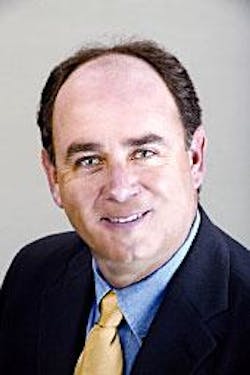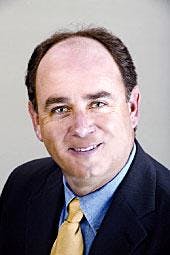Technologies can delay 'peak oil' by lifting mature-field recovery
Certainly we must find new reserves, but everyone knows we also need to exploit existing fields more efficiently and at lower costs than ever before. Who can afford to walk away from money in the ground?
To boost mature field recovery, I believe we must do four things better: (1) identify remaining reserves more clearly, (2) design complex well paths more accurately, (3) make optimization decisions more rapidly, and (4) leverage knowledge resources more intelligently. All of these require tighter, more streamlined integration of distributed information, processes, and expert personnel.
Fortunately, most of the tools we need are already on the table. Existing technology breakthroughs in each area can be reapplied quickly and effectively to improve production from mature fields worldwide.
Descriptions of several of these key technologies follow.
On-demand seismic
In addition to 4D seismic, which is not being taken up as rapidly as everyone expected, one way of better delineating bypassed reserves is by reprocessing and analyzing existing seismic data with more-advanced techniques, such as 3D prestack time migration.
However, use of algorithms like this can be extremely time-consuming and compute-intensive, especially with growing data volumes. Even sophisticated processing shops often lack the systems needed to handle advanced reprocessing jobs during peak periods.
The constant need to upgrade hardware platforms drives up the cost of processing services to oil companies requiring better subsurface images. A new on-demand computing paradigm is beginning to change all that.
Users of industry-standard seismic processing systems can now access sophisticated algorithms remotely and reprocess enormous surveys with incredible speed through on-demand subscription services. Without spending money on new hardware, processing specialists can use a global network of computing resources and pay only for what they use. Interpreters and processors can access common, hosted information-technology (IT) environments to enhance collaboration, integrate results, and reduce cycle times on complex asset redevelopment projects.
The ability to tap into supercomputing resources on demand removes the handcuffs from geophysical professionals and lowers the cost of obtaining better images of mature fields.
Real-time drilling
Designing complex well paths more accurately—especially targeting smaller or deeper pay zones in producing fields—requires seamless integration of real-time drilling and formation-evaluation data from the rig with the 3D earth model in the office. Through a new vendor-neutral wellsite information standard (WITSML) and today's satellite systems, it's possible to connect almost any rig in the world with an asset team anywhere else. As a result, team members can modify planned well paths in response to real-time changes in their understanding of complex reservoirs.
To achieve this level of integration, many oil companies are installing real-time operation centers (RTOCs)—customized IT environments that link the full range of geological and geophysical applications and visualization systems in the office with drilling personnel in the field. Companies are even moving portable RTOCs to different locations to monitor small operations.
Early adopters of real-time integration are landing wellbores with improving precision, dramatically reducing nonproductive time, and lowering total drilling costs. Incremental efficiencies gained in one well often affect subsequent wells in a drilling program, multiplying the value of lessons learned. One international oil company saved $39 million in just 1 year of real-time operations; another saved $4 million in 6 months.
Widespread implementation of this technology in mature fields should substantially reduce redevelopment costs.
Production optimization
Making rapid, effective reservoir-management and production-optimization decisions in mature fields also requires asset-team engineers to have easy access to real-time production data.
Real-time production data are acquired by automated process-control systems in the field, such as SCADA, and stored in process data "historians." To date, real-time data have been available only to operations personnel, who monitor and modify equipment to improve performance.
However, due to Historical Data Access standards, remote client systems can now interface with automated instrumentation in any well or process facility and transfer real-time production data directly into a suite of integrated desktop-engineering applications back in the office. Engineers can automatically update charts and maps and tie their analyses back to existing reservoir models.
Traditionally, reservoir and production engineers have utilized aggregated daily or monthly production values. With a real-time surveillance (RTS) system, they can access data at any desired time interval, on demand. Comparing predicted with actual rates, they can identify problem wells earlier, modify equipment conditions to remedy short-term process issues, and make faster, well-informed decisions to minimize long-term production losses.
Increasing mature-field recovery by even a few percent through RTS could greatly enhance oil companies' profitability.
Knowledge management
Sometimes we imagine a revolutionary new technology will solve all our problems. The truth is, we'll always need people to deploy technology effectively. How can we leverage our declining knowledge resources more intelligently?
First, we need to invest in universities and exploration and production research groups actively engaged in developing next-generation technologies. Much intellectual capital that once resided in oil company research and development departments has migrated to academic institutions and oil field service companies. We need to support innovation and blue-sky development.
Second, we need to leverage seasoned E&P veterans wherever they hang their hats—including outside specialists. Given the industry's diminishing workforce, sharing technical experts across multiple organizations only makes sense. Making consultants an integral part of the asset team can complement internal knowledge and improve technical and commercial decisions.
Finally, we need a knowledge management (KM) system that really works—a practical, process-based approach that is more about connecting people to solve real business problems than about electronic bulletin boards or global e-mails. Something like 85% of all KM initiatives fail because too many companies think KM is an enterprise-wide IT project or simply a document-management tool. It's neither. Technology is merely an enabler. In our experience, four key components of a successful KM system would include:
Forming communities of practice consisting of all peers (not just the "experts") within an organization who share common areas of interest and knowledge.
Assigning a full-time knowledge broker (or facilitator) to each community, to monitor threaded discussions, escalate urgent issues to known specialists and subject matter experts, and validate contents stored in knowledge repositories.
Building knowledge repositories with validated and updated content.
Providing participants with self-search capabilities and learning on demand; but if it takes too long to locate needed information, they should be able to turn to the knowledge broker and community for personal assistance.
Implementation of this approach to KM in 20 different areas of one international corporation has yielded savings of more than $45 million over the past 3 years, for an investment of less than $10 million.
Peak oil?
Not long ago, I had lunch with a vice-president from an international oil company. He told me that for years they've known they would have to reinvest in mature fields and begin to exploit them more efficiently. "We know what to do but we're not doing it yet," he said, in effect. "We need to apply technologies that already exist."
I believe the most important technologies, like the examples above, are those that successfully integrate people, processes, and data in real time across current gaps in the upstream value chain.
If oil companies were to adopt all of the existing technologies recommended here, I suspect they could improve ultimate recovery from mature fields by 10-25%. Imagine the impact of a 10% global jump in recovery from fields we've already discovered!
This would go a long way toward alleviating growing concerns about peak oil production.
The author
Peter Bernard has been president of Landmark Graphics Corp., a division of Halliburton, since April. Since joining Halliburton as a petroleum engineer in 1985, he has held a variety of management and executive positions within Halliburton's EnerTech, Energy Services Group, and Landmark organizations—including marketing, account management, regional and global operations, business development, and product management. He holds a BS in petroleum engineering from the University of Southwestern Louisiana.

